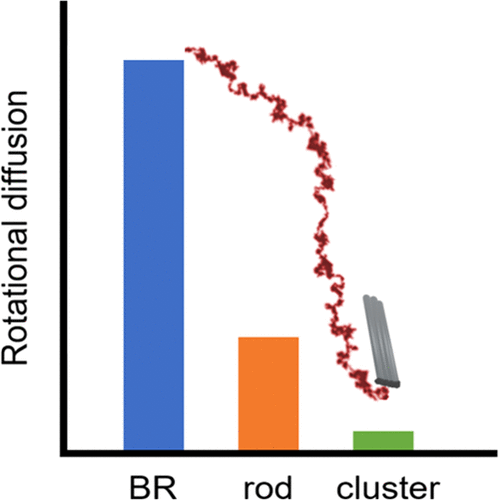The shape of objects has a strong influence on their dynamics. Here, we present comparative studies of two different motile objects, spherical Ag/AgCl Janus particles and polystyrene Janus nanorods, that move due to an ionic self-diffusiophoretic propulsion mechanism when exposed to blue light. In this paper, we propose a method to fabricate Janus rodlike particles with high aspect ratios and hemispherical tip shapes. The inherent asymmetry due to the ratio between capped and uncapped parts of the particles as well as the shape anistropy of Janus nanorods enables imaging and quantification of rotational dynamics. The dynamics of microswimmers are compared in terms of velocities and diffusion coefficients. We observe that despite a small amount of the Ag/AgCl reagent on the surface of rodlike objects, these new Janus micromotors reveal high motility in pure water. While the velocities of spherical particles reach 4.2 μm/s, the single rodlike swimmers reach 1.1 μm/s, and clusters reach 1.6 μm/s. The effect of suppressed rotational diffusion is discussed as one of the reasons for the increased velocities. These Janus micro- and nanomotors hold the promise for application in light-controlled propulsion transport.

The shape of objects has a strong influence on their dynamics. Here, we present comparative studies of two different motile objects, spherical Ag/AgCl Janus particles and polystyrene Janus nanorods, that move due to an ionic self-diffusiophoretic propulsion mechanism when exposed to blue light. In this paper, we propose a method to fabricate Janus rodlike particles with high aspect ratios and hemispherical tip shapes. The inherent asymmetry due to the ratio between capped and uncapped parts of the particles as well as the shape anistropy of Janus nanorods enables imaging and quantification of rotational dynamics. The dynamics of microswimmers are compared in terms of velocities and diffusion coefficients. We observe that despite a small amount of the Ag/AgCl reagent on the surface of rodlike objects, these new Janus micromotors reveal high motility in pure water. While the velocities of spherical particles reach 4.2 μm/s, the single rodlike swimmers reach 1.1 μm/s, and clusters reach 1.6 μm/s. The effect of suppressed rotational diffusion is discussed as one of the reasons for the increased velocities. These Janus micro- and nanomotors hold the promise for application in light-controlled propulsion transport.
